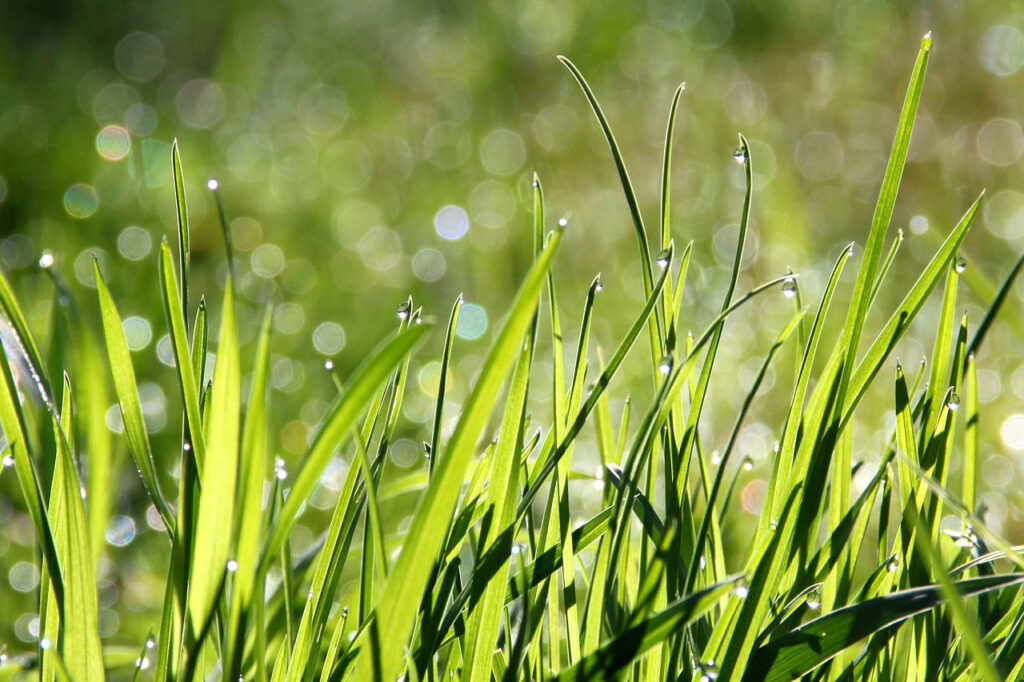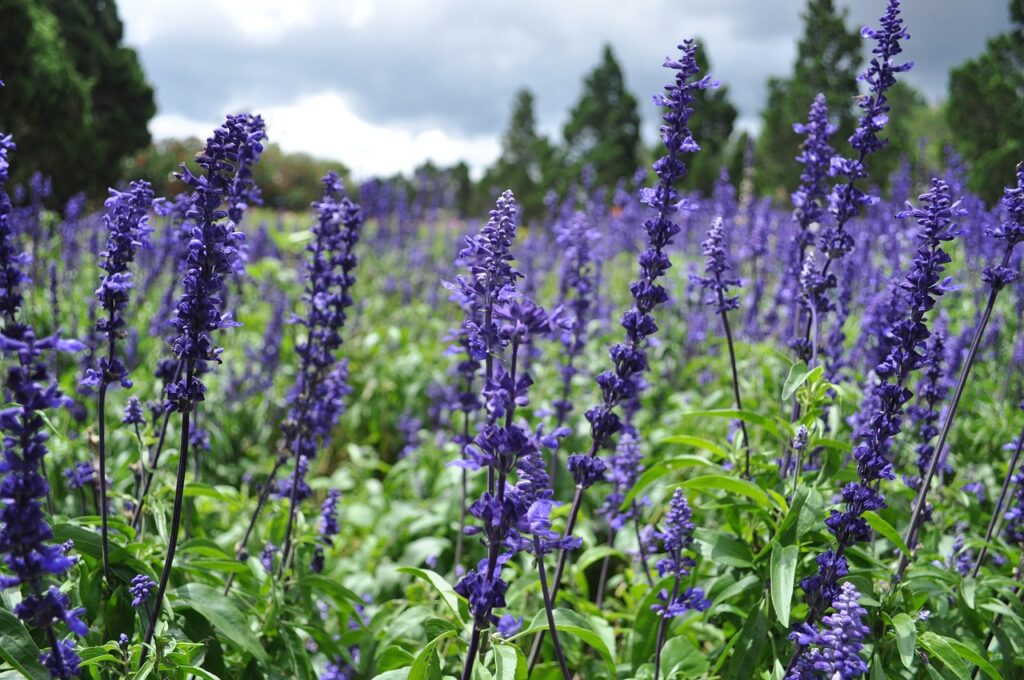Palmarosa Essential Oil: 3 Remarkable Benefits and 7 Simple Uses
Palmarosa essential oil comes from a sweet, aromatic grass found in the forest regions of India. This grass has been valued for generations in Southeast Asia for its natural medicinal qualities and its ability to repel insects.
- 1 – Acne Relief
- 2 – General Skin Care
- 3 – Palmarosa for Relaxation
- Hair mask
- Wrap-Up
- Palmarosa Essential Oil Benefits: FAQs
- What does palmarosa oil do for the skin and hair?
- How can you use palmarosa to freshen your home?
- How does palmarosa help create a relaxing environment?
- Does palmarosa blend well with other essential oils?
- What are some great palmarosa essential oil blend ideas?
- Does palmarosa pair well with mint or eucalyptus oils?
- Can palmarosa be blended with vanilla or cinnamon?
- Is palmarosa essential oil safe for topical use?
- What carrier oils are good for diluting palmarosa?
Its appearance and growth pattern are similar to lemongrass and citronella, which makes sense because all three plants are closely related.
Palmarosa is best known for two things:
- It’s soft, rosy, floral scent
- It’s impressive skin-care benefits
Because of this, it is commonly used in soaps, lotions, serums, and natural cosmetics. It also fits beautifully into aromatherapy routines and DIY blends, making it a versatile addition to any essential oil collection.
Below, we’ll explore some of the most appreciated benefits and simple ways to use this gentle, rose-like essential oil.
1 – Acne Relief
Chronic acne is among the worst skin conditions that can oftentimes lead to scarring on the face. Almost everyone experiences a phase in their life wherein acne creates havoc on their once blemish-free skin. This is especially common among teenagers, but others may experience acne even deep into their 30s and 40s.
Although chemical-based acne astringent solutions are potent and effective for some people, they are expensive and filled with harsh chemicals that can harm the skin.
Furthermore, many store-bought acne products lead to more severe breakouts when their use is discontinued, causing dependence on the chemicals in the product indefinitely.
Dependency isn’t an ideal long-term solution, especially if you have sensitive skin, which is why many people are now switching to beauty products that use exclusively natural ingredients. Not only that, but our bodies do absorb what we expose them to, and that’s a scary thought if we consistently expose ourselves to chemicals.
Natural solutions for acne are wide-ranging and often depend upon your skin type and the severity of the condition. Palmarosa essential oil has natural antiseptic properties that can help fight the bacteria that cause acne.
One study published in the Asian Journal of Beauty and Cosmetology found that the 21 participants involved in the study had significantly lower skin oil content, healthier pores, and major improvement with their acne after an 8-week period using palmarosa oil, a mixture of palmarosa and tea tree oil, or just tea tree oil.
All three groups showed improvement, but the combination of palmarosa and tea tree oil showed the best results.
When using essential oils, diluting them with a good carrier oil is recommended. You could use coconut, avocado, or sunflower oil if you have normal skin. However, if you have oily skin, be sure to use a high-linoleic oil like safflower oil, grapeseed oil, hemp oil, or rosehip oil. Also, Jojoba oil has been shown to have anti-inflammatory properties (source), so it’s also a good choice.
Recipe: Palmarosa and Tea Tree Acne Ointment Blend
Try this wonderful solution that uses palmarosa by mixing the following ingredients:
- 5ml of sunflower oil
- 1 drop of wheat germ oil
- 3 drops of palmarosa oil
- 1 drop of tea tree oil
Blend all ingredients and empty the solution into a glass bottle or any other container you choose. Apply the blended solution by massaging it on your face twice a day, morning and night.
2 – General Skin Care
This essential oil doesn’t just help alleviate acne but also diminishes old acne scars and wrinkles. This is a great oil for supporting optimal skin health and is popularly used as a skincare ingredient. Mix a few drops into any of your regular skin creams to incorporate this essential oil into your regular skin care regimen.
As noted earlier, this particular oil has an excellently sweet and rosy smell. Furthermore, it’s not photosensitizing and is considered safe if used correctly (diluted, not ingested, etc.). This essential oil can be used in many of the homemade skin care solutions and recipes we have here at Enticingly Simple; they include:
- DIY Aloe Vera Moisturizer for Acne
- Natural Body Wash Recipes
- Homemade Bar Soap Recipes
- Natural Face Wash Recipes
- Manuka Honey Skin Healing Recipes
Palmarosa oil is a very capable option for almost any general skin care application since it has no negative effects when used correctly.
3 – Palmarosa for Relaxation
Aromatherapy With a Diffuser:
As you already know from another recent post, essential oils are widely used to reduce anxiety and stress. In that post, where we listed 12 essential oils oftentimes used for anxiety, rose oil is listed as one popular option. Since palmarosa has a very sweet and rosy smell, this oil is also often used for relaxation purposes as well.
You can reap the relaxative benefits of this oil by putting at least two drops in a diffuser or vaporizer. Whenever studies have been done with diffusing oils, lower concentrations of oils always seem to work better. So, it will only take a few drops of oil in the diffuser; don’t overdo it.
Aromatherapy With Bath Salts:
If you want to use this oil in the bath, be sure to use a salt emulsifier. All that means is that you should make your own bath salts so that the oil dissolves and disperses in your bathwater instead of merely creating an undiluted oil sheen on the water’s surface.
To make bath salts, use a quality sea salt or Epsom salt mixed with 20-40 drops of essential oils (depending on how much salt you’re using). Then, let the mixture rest for a few hours before use. After you make your first batch of bath salts, the salt will absorb the essential oils and cause them to effectively disperse throughout your bath water when used.
Also, 1 cup of bath salts will last a very long time since you’ll only need a few small spoonfuls at most for each bath.
Aromatherapy Massage:
This essential oil can also be mixed with a carrier oil to make an excellent massage oil. For great anxiolytic benefits, create a palmarosa oil blend utilizing other essential oils known to reduce anxiety. See the post we referenced above for a list of which oils to use for relaxation.
To list a few, lavender, frankincense, and bergamot oil are excellent selections for this purpose. Be sure to always mix your essential oils with a carrier oil before using them as a massage oil. Massage carrier oil selections include jojoba oil, almond oil, fractionated coconut oil, olive oil, and others. You can use body butter for massage as well.
Hair mask
You can use this wonderful oil as a hair mask to moisturize your dry hair and fight bacteria on the scalp. To do this, add 7-8 drops with three tablespoons of warm olive or jojoba oil (which is known to be very beneficial to the hair).
- Mix the oils together and pour some of the mixture into your palms.
- Apply the mixture to your hair by massaging it onto your scalp and reapply for complete coverage.
Don’t forget to massage the mixture starting from the scalp all the way up to the ends of your hair. After all the hair is covered with the mixture, wrap it in a towel or plastic wrap. Leave it on for at least an hour, or you can leave it overnight for the best results. Wash and condition the hair after use.
You’ll notice that your hair feels soft and moisturized after each application. You can also palmarosa to your favorite homemade leave-in conditioner.
Wrap-Up
As you can see from what we’ve discussed so far, palmarosa is a very versatile essential oil indeed. While its scent is quite amazing, it has many additional positive benefits that can be reaped from its use. Not to sound like a broken record, but whenever you use anything as potent as an essential oil, be sure to use it correctly (see below).
If you’re new to oils, I highly recommend reading the following two posts, which go into great depth about how to buy quality oils and use them correctly.
If you need even more ideas about how you can use palmarosa oil, check out the following two posts:
- Seasonal Essential Oil Blends (Summer or Spring Blend)
- Homemade Dish Soap (Great option since it has antibacterial properties)
That just about wraps things up, folks; I hope you enjoy every oil selection we recommend to you. It is amazing when you can bring a little bit of nature into your home rather than chemicals and other harmful pollutants. Enjoy your oils.
Palmarosa Essential Oil Benefits: FAQs
What does palmarosa oil do for the skin and hair?
Palmarosa is deeply hydrating, making it helpful for dry or irritated skin.
Use it by:
- Mixing a few drops into a carrier oil for a moisturizing facial or body oil
- Adding it to shampoo or conditioner for softer, smoother hair
- Including it in DIY creams or serums for extra nourishment
Its gentle cleansing properties also support healthy scalp care.
How can you use palmarosa to freshen your home?
Add several drops to a diffuser or vaporizer. Its clean, rosy aroma naturally freshens indoor air and creates a light floral atmosphere without synthetic fragrances.
How does palmarosa help create a relaxing environment?
Its soft rose-like scent promotes calm and emotional balance.
Try using it by:
- Diffusing during rest, prayer, reading, or winding down
- Applying a diluted blend to pulse points
- Adding to bath salts for a soothing soak
Does palmarosa blend well with other essential oils?
Yes. Palmarosa blends beautifully with many oils. Great partners include:
- Floral: geranium, rose, ylang-ylang, lavender
- Citrus: lemon, bergamot, grapefruit, orange
- Woods/Resins: sandalwood, frankincense
- Herbal/Mints: peppermint or spearmint in small amounts
Choose blends based on the result you want: floral, grounding, uplifting, refreshing, or soothing.
What are some great palmarosa essential oil blend ideas?
- Palmarosa + Lavender + Bergamot: calming, floral, peaceful
- Palmarosa + Sandalwood + Patchouli: warm, grounding, earthy
- Palmarosa + Ginger + Lime: bright, energizing, and refreshing
Does palmarosa pair well with mint or eucalyptus oils?
Mint oils like peppermint and spearmint blend nicely.
Eucalyptus can work too, but it is much stronger, so use it sparingly to avoid overpowering the floral notes.
Can palmarosa be blended with vanilla or cinnamon?
Yes. Vanilla softens palmarosa’s floral tones, and cinnamon adds warmth. These combinations make cozy diffuser blends, especially for fall and winter.
Is palmarosa essential oil safe for topical use?
Generally, yes, when properly diluted.
To use safely:
- Always mix with a carrier oil
- Patch test first
- Avoid eyes, lips, and mucous membranes
What carrier oils are good for diluting palmarosa?
Great options include:
- Coconut oil
- Jojoba oil
- Grapeseed oil
- Olive oil
- Sweet almond oil
Always start with a small patch test before applying to larger areas.


